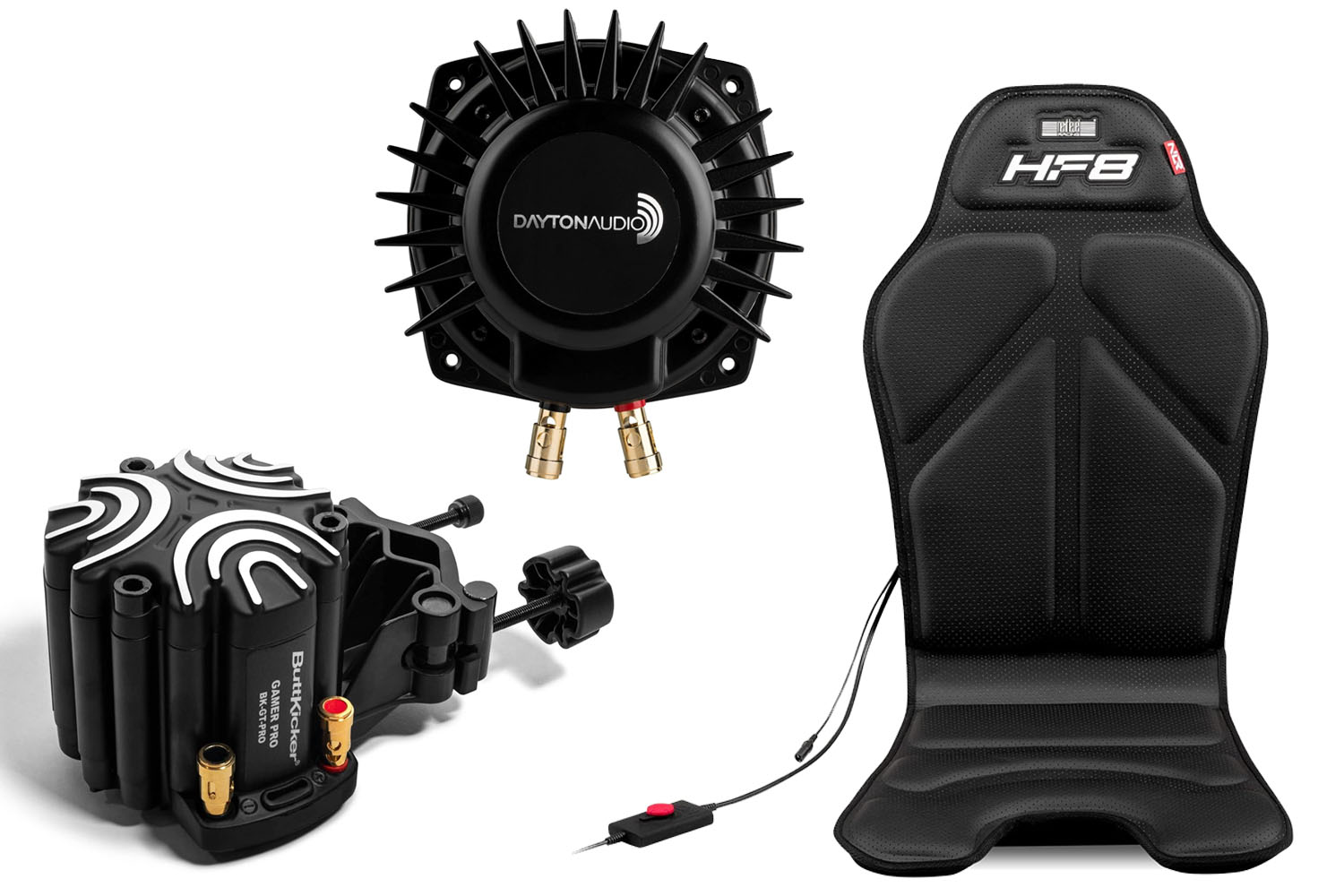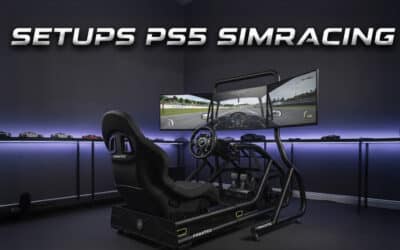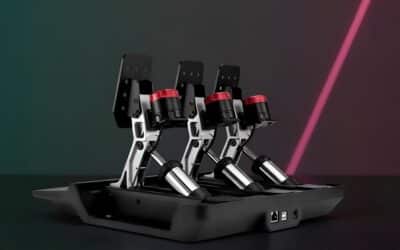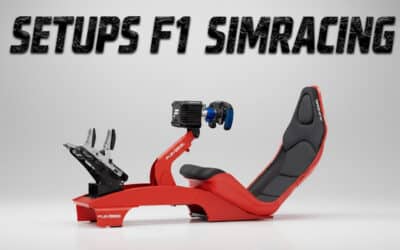Sim-racing setups are plentiful, with the following main items of equipment: a Direct Drive base, a steering wheel tailored to the motorsport discipline you like, a Load Cell or hydraulic crankset (if you can afford it), a shifter or handbrake (if you need one) and a cockpit. That’s the basis for any immersive setup.
Of course, some players won’t be able to afford a chassis with a bucket seat, as these little gems can easily fetch upwards of €1,600 when purchased from well-known brands offering innovative solutions. But without a chassis and bucket seat, the experience will be diluted. And I’m not even talking about triple or curved screens, which add a good layer of immersion, especially with the right FOV setting.
That’s the basics, as I said earlier. And if you want to push the envelope even further, you’ve got dynamic cockpits, incorporating cylinders at all four corners to simulate body movements when cornering. However, this solution is very expensive to integrate, and more often than not, you’ll need a specific chassis to accommodate this upgrade. Next Level Racing offers a kind of platform for some of its cockpits to add body movements, but this solution is very expensive (over 3,000 euros).
And where there’s a need, there’s a need for DIY. In the world of home cinema, there are products designed to enhance the immersive experience of watching a film. The idea is to provide haptic feedback when an explosion, gunfight or other spectacular scene occurs on screen. In practice, this involves a haptic (vibration) module that recovers the signal from the audio output to filter out low frequencies and move an electromagnet encapsulated in a metal box.
The company behind such a product is called ButtKicker, and it’s a reference in the field. What’s more, the brand also equips movie theaters all over the world, to enhance immersion when watching a film.
ButtKicker solutions aren’t that expensive for personal use; expect to pay €350 for the vibrator, and around €400 for a specific amplifier. The ButtKicker has become so popular around the world, that many gamers have started installing it on their setup, particularly in sim-racing.
In fact, this DIY solution has become so widespread that the company behind the ButtKicker has been “forced” to offer a specific product: the ButtKicker Gamer Plus and Pro, priced at around €250 and €300 respectively. The principle of this equipment is rather simple: you have a vibrator that installs directly on your chassis using a clamp, and the audio part, i.e. the signal, is managed via either a USB (latest versions of the ButtKicker) or RCA connection.
This is a very practical solution, and considerably less expensive than a dynamic chassis. Of course, you won’t have the body movements and mass transfers, but it’s a plus in terms of immersion, especially under braking and other shocks.
Next Level Racing’s solution: lower prices, no need for chassis

The engineers among you will have noticed that the ButtKicker is fine, but requires a chassis. Racers with a stand or on a desk won’t be able to use the Gamer Plus, because it can’t be installed on a chair. Seeing this gap in the market, Next Level Racing jumped at the chance to develop a kind of pad that fits directly onto a bucket or chair, eliminating the need for a chassis.
It’s called the HF8 Haptic Gaming Pad, and it’s like a cover you put on a chair, incorporating 8 motors for vibration, or haptic feedback. The motors are distributed over the entire surface of the pad, touching virtually the whole of your back. The audio signal is supplied either via USB for PCs, or via 3.5 jack on consoles. You can adjust the HF8 via NLR or SimHub software, on PC of course, to set all the effects you want. It’s a very complete, effective and relatively affordable solution (around €250 for the cover). What’s great about NLR’s HF8 is that you can install it on any sim-racing setup, whether or not you have a chassis, making this product portable, but also more interesting for lambdas wanting to add a layer of immersion to their setup.
However, the intensity of the vibrations will be attenuated by the very nature of the solution. With the ButtKicker, the haptic feedback is propagated via the chassis, gaining in resonance, and therefore more effect in the end. With the HF8, the motors offer custom vibrations in different parts of your back, but at the expense of power. It’s all a question of compromise, and what you’re looking for in the solution too.
The DIY solution: the bass shaker

Let’s finish with the truly DIY solution, which consists in having the advantages of the other two we’ve seen, without the need for a chassis and/or the budget that goes with it. The bass shaker is, as the name suggests, a bass that provides haptic feedback by exploiting low frequencies, or bass if you prefer.
The idea is simple in its implementation: you have a specific bass driver which is encapsulated in a cabinet to provide a kind of resonance, hence haptic feedback. This is a truly budget-friendly solution, as well as being easy to set up on virtually any sim-racing setup. It’s less noisy than a ButtKicker, yet more powerful than an HF8. However, you’ll need to install the bass shaker very close to your body to feel the full effects, especially if you opt for a smaller unit.
Please note: the bass shaker is a DIY addition, meaning you’ll have to do it all yourself, with some audio equipment. The operation is simple and inexpensive (around €150). You’ll need :
- An audio amplifier, or amp, with 2 outputs (wattage as you like, but don’t go over 100w) and USB input for connecting to the PC
- 1 or 2 bass shakers depending on amp power
- Cabling, including USB and audio to connect equipment (amp to PC, bass shakers to amp)
- And screws and bolts to mount it all at your setup.
The amp will be recognized as an external audio card, and you can configure it all via SimHub. It’s not very expensive, provided you’re rational, and custom because you can add other bass shakers, a more powerful amp, etc. This solution, like the other two, is mainly designed to increase the rider’s immersion, not to improve his lap times on the track.










0 Comments